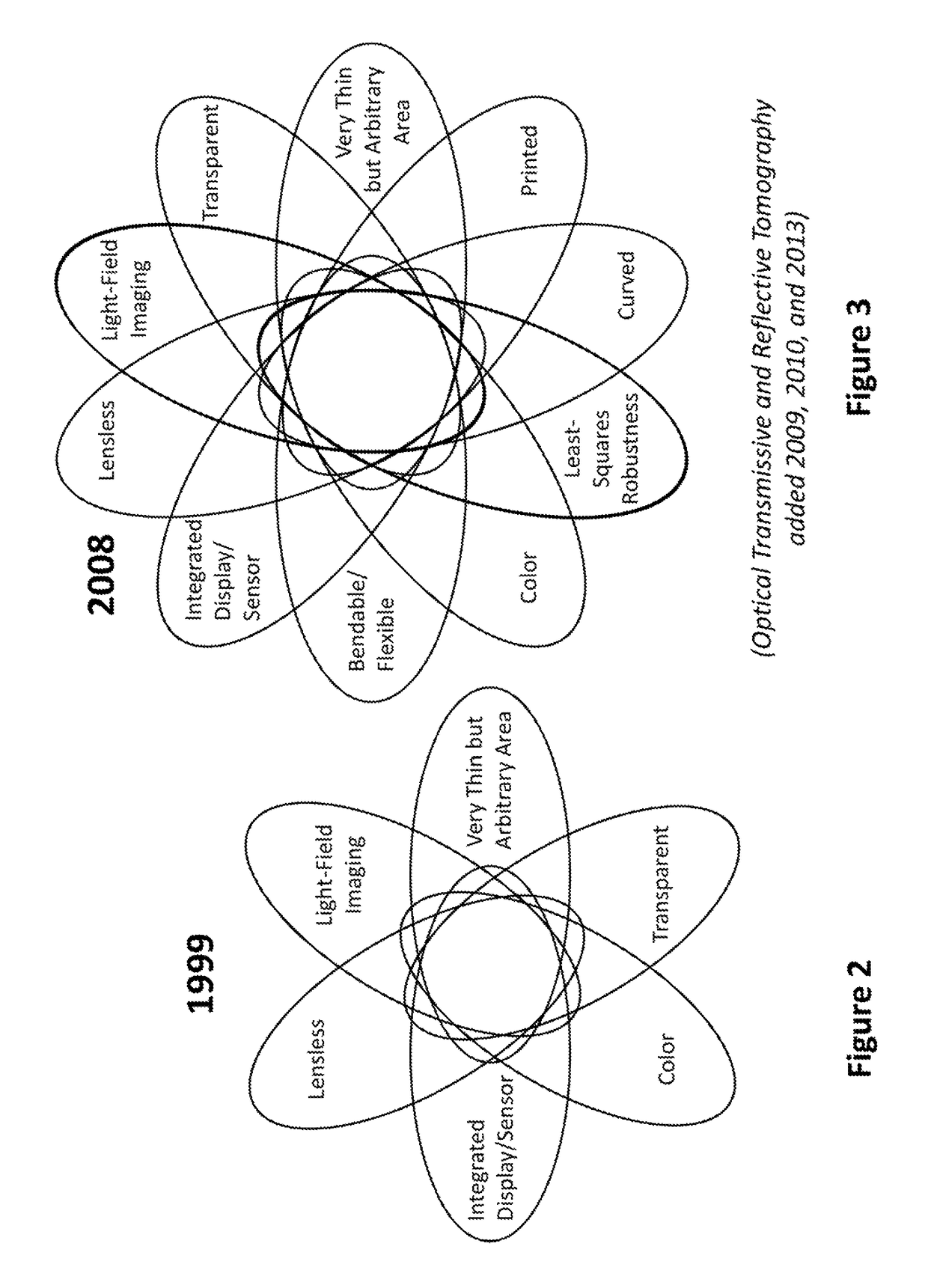Advanced lensless light-field imaging systems and methods for enabling a wide range of entirely new applications
a technology of light-field imaging and advanced lensless technology, applied in the field of computation imaging and light-field sensors, can solve the problem that not all such advantages can be achieved
- Summary
- Abstract
- Description
- Claims
- Application Information
AI Technical Summary
Benefits of technology
Problems solved by technology
Method used
Image
Examples
case b
uous Spatially-Varying Separation Distances —Non-Parallel Planes:
[0399]Relaxing the constraints in Case A, the above-described planes of (a) the objects or situations producing contributions to the light-field and (b) the image sensor are not parallel but rather oriented at some non-parallel and non-perpendicular dihedral angle. The resulting light-field has separation mixed distances. The discussion and capabilities of this development explicitly include cases with zero separation distance between at least a subset (even a 1-dimensional edge or even a single point) of a planar array of light-providing “light-source” pixels and a subset (even a 1-dimensional edge or even a single point) of at least a planar array of “light-sensing” pixels.
[0400]As an illustration of Case B, FIGS. 25a and 25b depict a pair of illustrative 3-dimensional views of an example variation of the arrangement depicted in FIG. 24 wherein a planar array of (emitted and / or reflected) light source elements and a ...
example c
s Spatially-Varying Separation Distances—Curved Surfaces:
[0403]Relaxing the constraints in Case A in yet another way, one or both of (a) the objects or situations producing contributions to the light-field and / or (b) the image sensor reside on smoothly-curved non-planar surface. The resulting light-field has separation mixed distances and in some cases possible occultation depending on variations in curvature. The discussion and capabilities of this development explicitly include cases with zero separation distance between at least a subset (even a 1-dimensional edge or even a single point) of a planar array of light-providing “light-source” pixels and a subset (even a 1-dimensional edge or even a single point) of at least a planar array of “light-sensing” pixels.
[0404]As an illustration of Case C, FIGS. 27a and 27b depict a pair of illustrative 3-dimensional views of an example of a non-planar curved surface and a planar surface with a spatially-quantized light-field representation...
PUM
 Login to View More
Login to View More Abstract
Description
Claims
Application Information
 Login to View More
Login to View More - R&D
- Intellectual Property
- Life Sciences
- Materials
- Tech Scout
- Unparalleled Data Quality
- Higher Quality Content
- 60% Fewer Hallucinations
Browse by: Latest US Patents, China's latest patents, Technical Efficacy Thesaurus, Application Domain, Technology Topic, Popular Technical Reports.
© 2025 PatSnap. All rights reserved.Legal|Privacy policy|Modern Slavery Act Transparency Statement|Sitemap|About US| Contact US: help@patsnap.com



